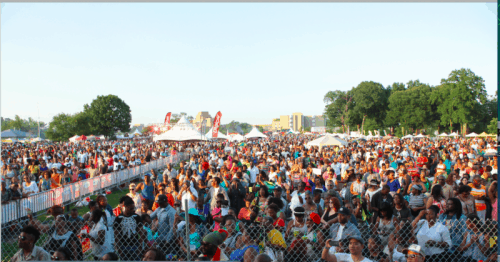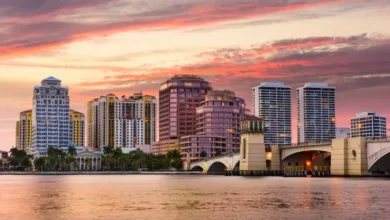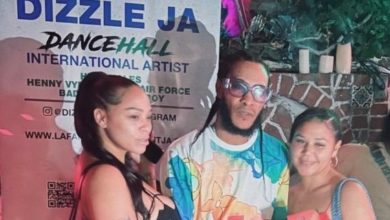New York area museums exhibits Jamaican / Caribbean art
NEW YORK – In the New York tristate area there are two major Caribbean Art exhibitions happening at museums featuring contemporary Caribbean art at the Brooklyn Museum from over forty-five artists and the works of Jewish Jamaican-born artist Isaac Mendes Belisario at the Yale Center in Connecticut.
Exhibitions: Infinite Island & Contemporary Caribbean Art
Infinite Island presents some eighty works made in the last six years that reflect the region’s dynamic mix of cultures, its diasporas, and its socio-political realities, all of which are constantly transforming themselves.
The forty-five emerging and established artists, who work both in the Caribbean and abroad, represent multiple perspectives as they explore the complexities of Caribbean history and identity,. Including painting, sculpture, photography, prints and drawings, video, and installation, the exhibition is grouped around themes that encompass history, memory, politics, myth, religion, and popular culture.
The exhibition is curated by Tumelo Mosaka, Associate Curator of Exhibitions at the Brooklyn Museum, located at 200 Eastern Parkway, Brooklyn, New York.
The exhibition is made possible by the Martha A. and Robert S. Rubin Exhibition Fund and the Barbara and Richard Debs Exhibition Fund.
Generous support is contributed by the Peter Norton Family Foundation, the American Center Foundation, and the National Endowment for the Arts. Additional funding is contributed by the Friends of Brooklyn Museum, the Mondriaan Foundation, Amsterdam, and the Consulate General of the Netherlands.
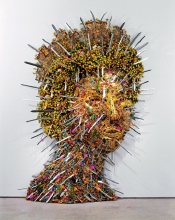
Hew Locke (British, b. 1959). El Dorado, 2005. Mixed media, 114 1/4 x 68 7/8 x 23 5/8 in. (290 x 175 x 60 cm). West Collection, Oaks, Pennsylvania
Photo: FXP Photography
Art & Emancipation In Jamaica
Organized by the Yale Center for British Art, Art & Emancipation in Jamaica has been curated by Gillian Forrester, Associate Curator of Prints and Drawings, Yale Center for British Art; Tim Barringer, Paul Mellon Professor of the History of Art, Yale University; and Barbaro Martinez-Ruiz, Assistant Professor, Department of Art and Art History, Stanford University. Generous support for this project has been provided by the Reed Foundation, Inc.
The Yale Center is located at 1080 Chapel Street New Haven‚ Connecticut and the art will be on display from September 27 — December 30, 2007
Organized to commemorate the bicentenary of the abolition of the British slave trade, Art & Emancipation in Jamaica is the first exhibition to focus exclusively on the visual culture of slavery and emancipation in Jamaica.
Many works in the exhibition are selected from the Center’s extraordinarily rich holdings relating to the Caribbean, which provided the original impetus for this exhibition. Art and Emancipation also features works produced in the Caribbean and Britain, including a number lent from public and private collections in Jamaica that have rarely or never been exhibited.
The exhibition chronicles the iconography of sugar, slavery, and the topography of Jamaica from the beginning of British rule in 1655 to the aftermath of emancipation in the 1840s, with a particular focus on the turbulent years preceding and immediately following emancipation in 1838. Gathered together for the first time are drawings and prints depicting life on a Jamaican sugar plantation, and images used by the anti-slavery campaign.
At the center of the exhibition is the remarkable lithographic series Sketches of Character, In Illustration of the Habits, Occupation, and Costume of the Negro Population in the Island of Jamaica, made by the Jewish Jamaican-born artist Isaac Mendes Belisario.
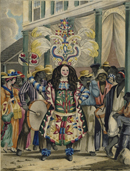
Sketches of Character, by artist Isaac Mendes Belisario
Published in Jamaica in 1837-38, Sketches of Character provides the first detailed visual representation of Jonkonnu (or John Canoe), the celebrated Afro-Jamaican masquerade performed by the enslaved during the Christmas and New Year holidays. Tracing the West African roots of Jonkonnu, its evolution in Jamaica, and its continuing transformation into the twenty-first century, the exhibition features Jamaican and West African costumes and musical instruments, accompanied by video footage of historic and contemporary performances, as well as a specially commissioned sound track.
The exhibition concludes with work by contemporary Jamaican and Afro-Caribbean artists investigating the complex legacy of slavery and emancipation. There will be a full program of events accompanying the exhibition, including lectures, performances, concerts, gallery talks, film series, a community open house, and a scholarly symposium.


